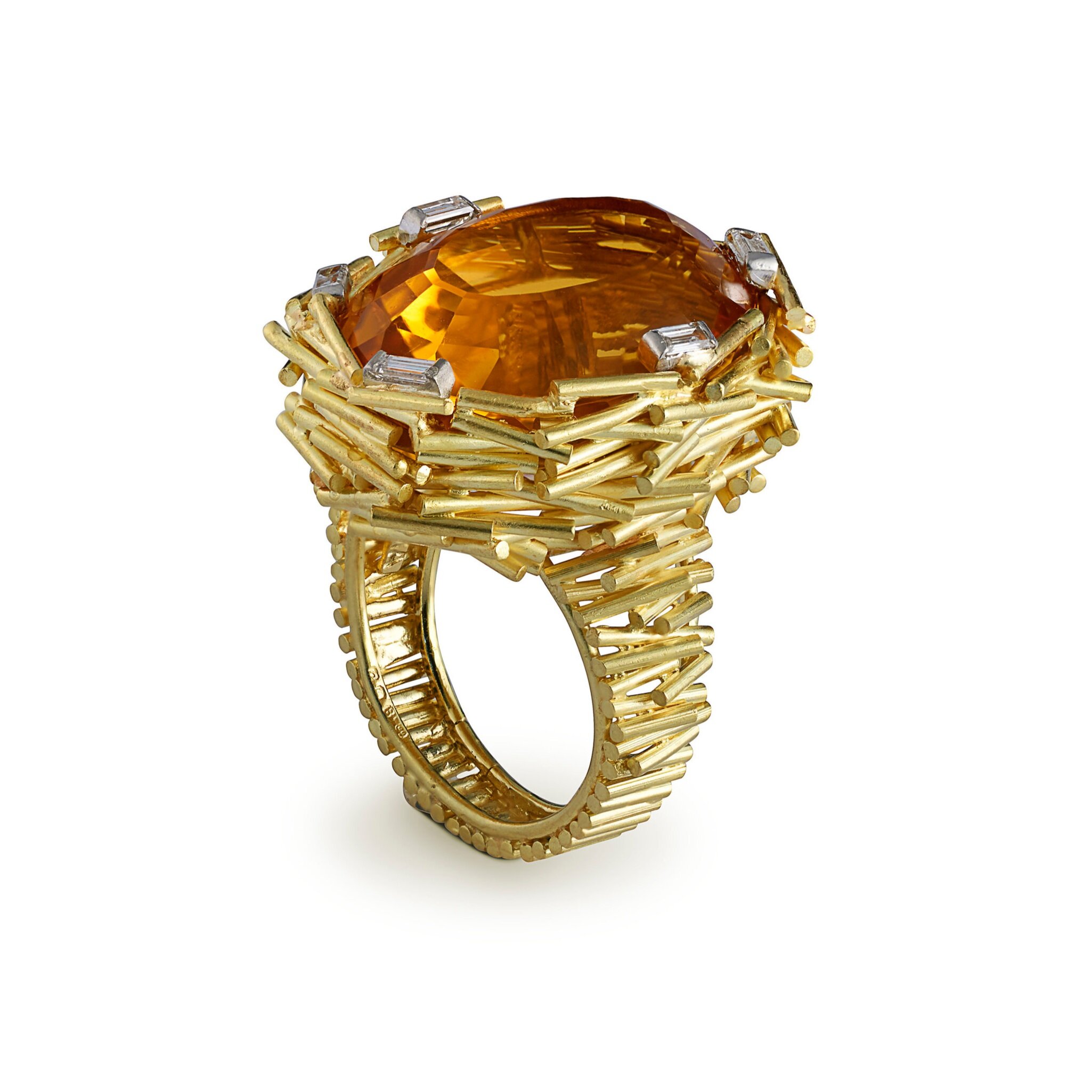Chunky and Funky - the rise of post-war jewellery
9 July 2020
With post-war sentiment clinging on into the 1950s, jewellery design was dull and unexciting. That is until the swinging sixties, when individualism was encouraged and jewellery design began to shine.
Hetty Lintell
Hetty Lintell is the Luxury Editor of Country Life Magazine.
Which era would you most like to have lived through? The answer – for many people, men and women alike – is a resounding cheer for the 1960s. The wartime mood was fading and people were ready to let loose, particularly in London, often considered the hub of fashion rebellion. Dior’s New Look of the 1950s had been revolutionary at a time when ‘make do and mend’ was the order of the day, but although couture clothing became the height of elegance, jewellery design was still very restrained. With rationing in place until the mid-1950s and raw materials depleted by the war effort, experimental jewellery was not high on the agenda. Jeweller, Nigel Milne, explains ‘there was still an air of austerity and even if one could afford it, there was a reluctance to be seen to be splashing money around ostentatiously’. That is, until a monumental landmark exhibition in 1961 changed the perception of jewellery design. The International Exhibition of Modern Jewellery 1890-1961 was held at Goldsmiths’ Hall and included a donation of £12,000 from De Beers to sponsor a national competition to ignite a more experimental style of design. The exhibition included specially commissioned jewellery by sculptors such as Kenneth Armitage and Elisabeth Frink, alongside designs from the turn of the century to the modern day. It was a roaring success – clearly the public were hungry for innovation. Independent fine jewellery specialist Joanna Hardy, formerly Senior Jewellery Specialist at Sotheby’s, reflects that ‘it kick-started a new wave of jewellery making and gave craftsmen the permission to explore and develop invigorating designs that breathed life back into a dying industry’.
Citrine Ring, 1969, by Andrew Grima.
Yellow gold 'Bird's Nest' set with baguette-cut diamonds and an oval citrine.
Image courtesy of Grima Jewellery Ltd
In the years that followed the exhibition, jewellery design in London was swept along as the city got back to its cultural feet. Milne reflects that ‘wider career opportunities and increased spending power emboldened people’. It is also clear that breaking free from the shackles of wartime meant jewellery was to be worn again, as opposed to being simply kept in a safe. Sandy Stanley, a specialist dealer in post-war jewellery explains that 'things changed from a reticent style to something much more uninhibited. There was a new demand for larger-scale and more unusual pieces which helped to fuel British jewellers to design really creatively.’
Today, post-war jewellery is having a bright moment. Designers such as Andrew Grima (who opened a shop on Jermyn Street in 1966) were revolutionary, and his sculptural pieces celebrate original, often uncut stones set in textured yellow gold. Grima’s wife Jojo and daughter Francesca have continued this tradition of creating highly original handmade jewellery since his death in 2007. Twenty years ago you could have picked up Grima’s pieces for £400-500 but they now sell for ten times the price. As demand for jewellery grew, designers moved away from diamonds and sapphires and looked towards cheaper stones such as pearls, lapis, amethyst and tourmaline, which could be more impactful set in chunky yellow gold. It became as much, if not more, about the design as about the stone itself. Alongside Grima, Charles de Temple, who famously made the gold finger in the 1964 James Bond film, was a big part of the London jewellery scene in the swinging sixties. Temple was at the forefront of challenging boundaries in terms of how stones had been previously set, which often involved taking pearls and amethysts and half-dipping them in gold. Gerda Flöckinger was the first woman to have a solo show at the V&A and was a true artist-jeweller, making everything herself with a verve for extraordinary designs. Meanwhile, Wendy Ramshaw was famous for her stacking ring sets. Those who know her work agree that it is echoed in a trend for jewellery layering, which is currently in vogue on Instagram.
Today, if you compare the jewellery boxes of a grandmother and granddaughter, there may well be overlap. The textured styles of the 1960s and 70s are appearing in modern designs, for both high and fashion jewellery, and the 1980s’ smoother gold and chunkier look is more popular than ever. ‘I sell a lot of jewellery from my shop to young people in the fashion world, or the more creative set’, Stanley divulges, ‘they enjoy something with history and have grasped the importance of that post-war era’.
The sweet spot for younger women buying vintage jewellery tends to be around £1-2,000 – an investment, yes, but not so scary a sum that it can’t be worn out and about. With clothing becoming ever more casual, traditional jewellery simply doesn't work but the likes of a chunky 1980s gold chain bracelet does. ‘Jewellery doesn’t have to be precious in order to create an impact’, encourages Milne. ‘Big ebullient creations of costume jewellery can work to significantly dramatic effect – the only condition for its success is that it must be good and it must be original'.
Looking back, the development of post-war jewellery shows that when collectors engage with individual names rather than big fashion houses, great things happen.







